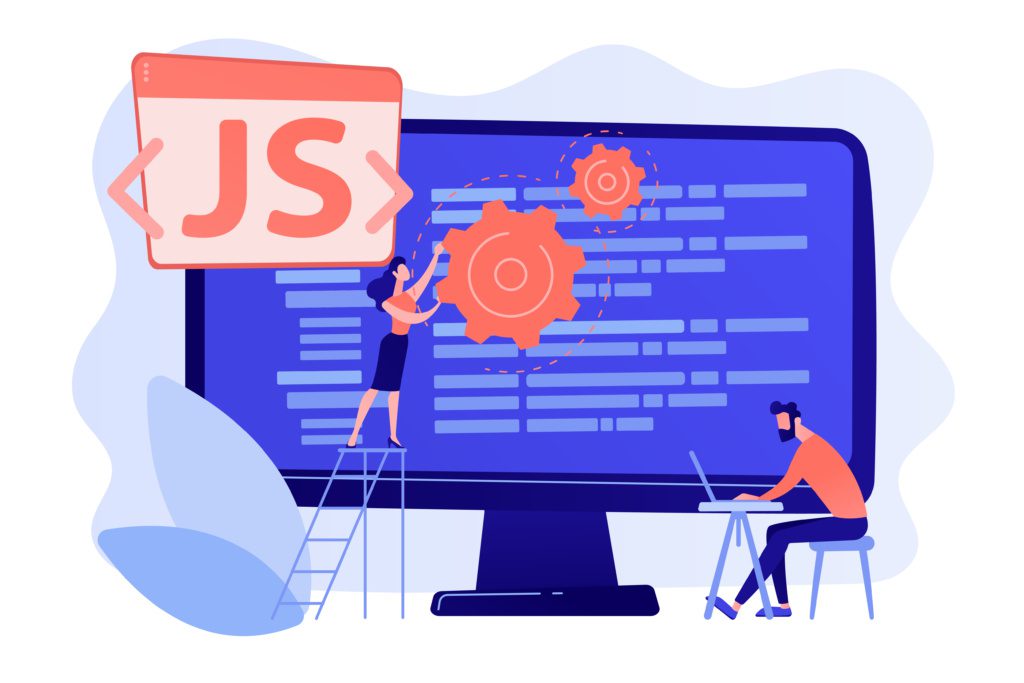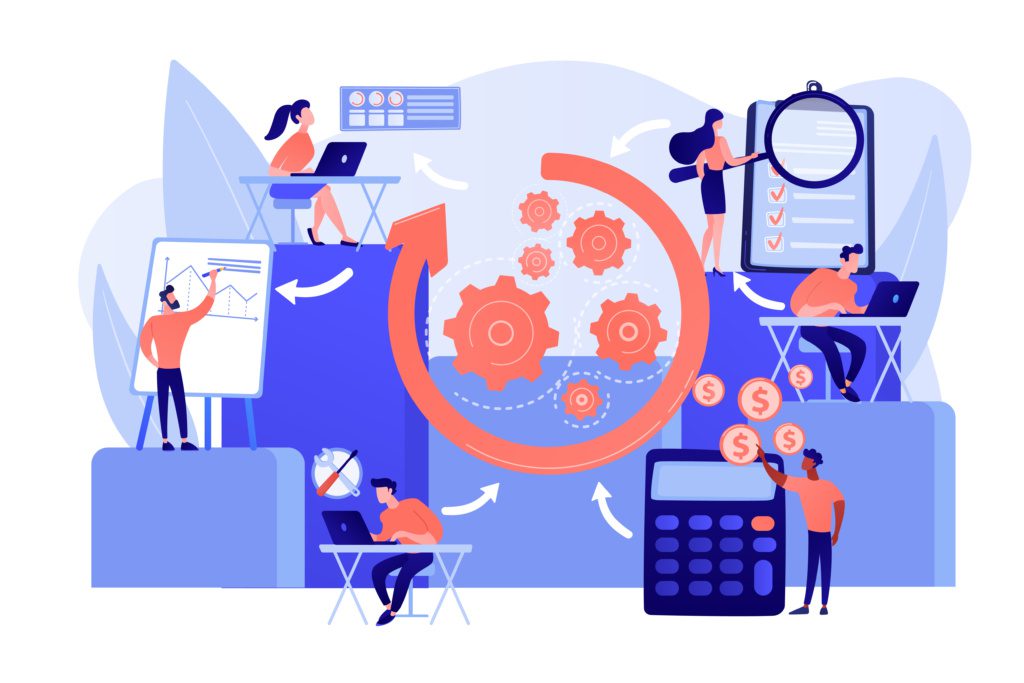Front-end frameworks and libraries play a key role in the development of web solutions. Using these technologies, developers always have tools to create a sophisticated interface structure using pre-prepared patterns and models.
To keep you in touch with the latest news in web development, we’ll take a quick look at the hottest front-end frameworks that developers are paying attention to the most. Particularly, in this blog post we will explain their key features and advantages, as well as the purpose of each of these frameworks and libraries. We’ll also demonstrate our expertise and provide examples of web solutions that we have developed based on the popular technologies mentioned here.
Exploring Top Frameworks and Libraries of 2024

Vue.js
The first example of a front-end framework that is still relevant in modern web development is Vue.js, based on Java Script. A large number of experts, including our developers, choose this framework because Vue.js allows you to create a convenient and visually pleasing user interface. In our previous blog post, you can learn more about this framework, as well as its combination with Laravel.
In addition to the Tarka Health platform mentioned in that post, we have used Vue.js and Laravel in several projects including Shoptobi, Groovv, EZ-Estimate, FyreFly, and many more.
Tailwind CSS
Tailwind CSS is still relevant today because this framework is perfect for developing customized interface designs. It’s a relatively new and experimental frontend framework that has a growing community and a large number of classes and utilities that speed up the development process.
The frontend framework has been actively used to develop projects such as FyreFly.
Nuxt.js
Nuxt.js is still popular among developers since this framework is based on the aforementioned Vue.js and allows better SEO optimization for web solutions. Nuxt.js is a rather flexible, experimental technology that is constantly updated and allows you to create more flexible and interesting interfaces.
The most notable case where Nuxt.js was used for the front end is an LMS for lawyers.

React
React has been a relevant technology for front-end development for many years. It was used for the development of advanced web solutions like Facebook and Instagram. This front-end framework is still popular because it allows you to create a dynamic interface for large-scale, heavy, and multi-functional projects.
Our developers have used React to develop a product such as course purchasing portal Initium.
Bootstrap
Bootstrap is a front-end framework developed by Twitter and remains relevant today. It allows rapid prototyping and responsive design. In addition, Bootstrap is great for those who are planning simple, static, and lightweight projects.
The most notable case where our developers used Bootstrap is the WriterLink social network.

Tips for Choosing the Right Front-End Development Libraries and Frameworks
Choosing a front-end framework is a strategic decision that affects the development of your project. When choosing a front-end framework, taking into account the needs of the developer and the company, you should pay attention to the next criteria including
- Compliance of the framework with the knowledge of the developer himself. During web development, the choice of a certain framework or library is always based on the level of the developer’s knowledge and skills. If a specialist is well trained to work with JavaScript-based technologies, then they are unlikely would develop Python-based solutions quickly and efficiently. During development, employees will simultaneously learn a new technology, which causes delays in the development process. The final product will unlikely satisfy the client because many system errors and bugs will be found in this product. So developers should work with proven technologies.
- Active and constant support. A significant number of aforementioned technologies have active communities, well-thought-out documentation, and constant updates. Developers also often pay attention to this these frameworks and libraries have good compatibility with other technologies.
- The project purpose and characteristics. The functionality and usability of the framework are determined by the main goals of the project: the field of use, the main functions, the project scale, etc.
In conclusion, web solutions development (particularly, intuitive and high-quality frontend development) continues to evolve rapidly. Modern front-end technologies keep up with the times and are constantly updated to create an interesting product that will attract many users.
All of the above-mentioned frontend frameworks and libraries, which remain relevant this year, have different functionality and purpose. But, on the other hand, all these technologies have a few things in common: they all have active communities and they are constantly updated. These frameworks and libraries also enable developers to create modern and functional web solutions interfaces that make businesses competitive and successful.
Keywords: front development, front end development, front end development libraries, front end development with ai, front end development frameworks, front end development libraries projects, front end developer libraries, web development company ukraine, ukraine it outsourcing, it outsourcing ukraine, it outsourcing to ukraine, it outsourcing companies ukraine, ukraine web developers


